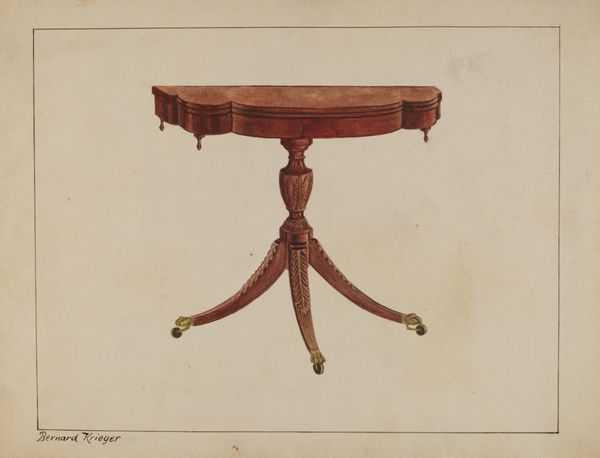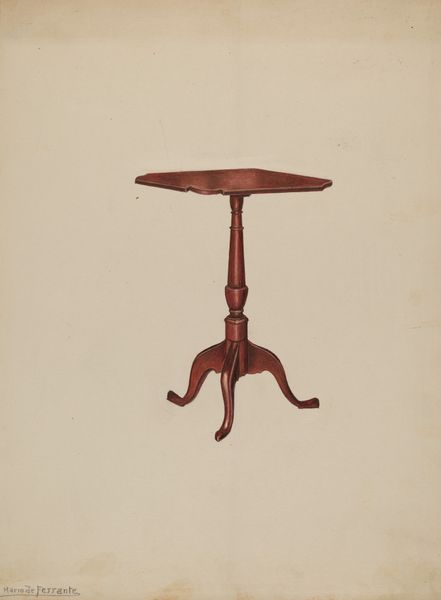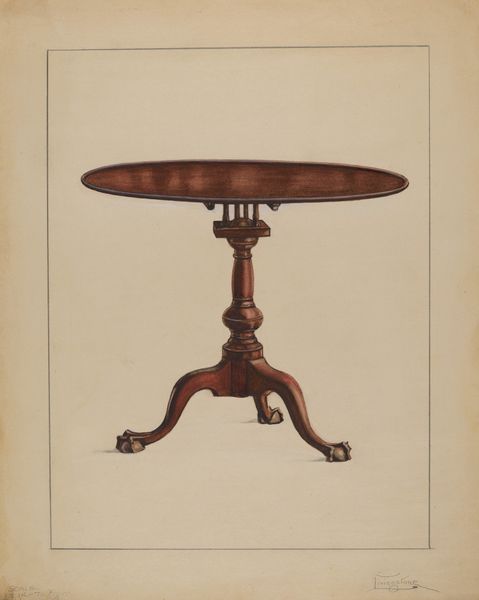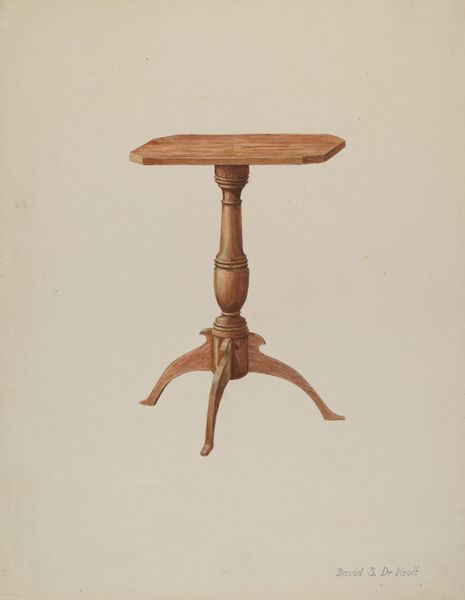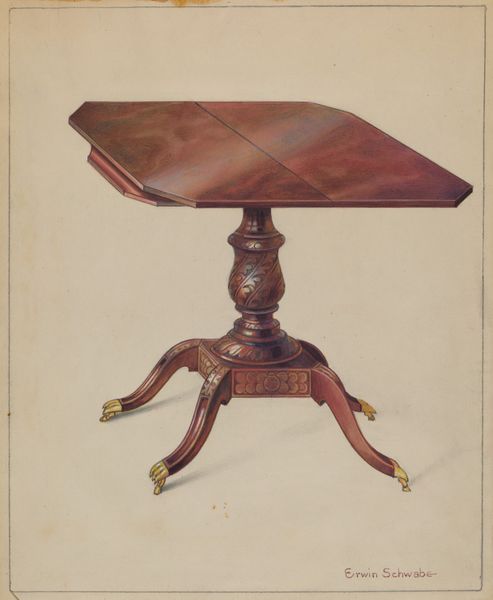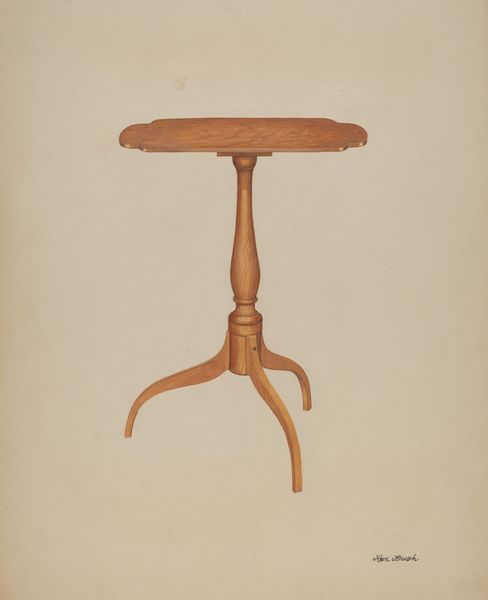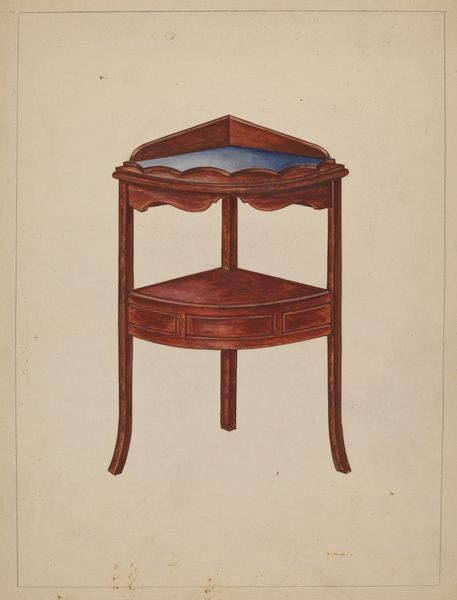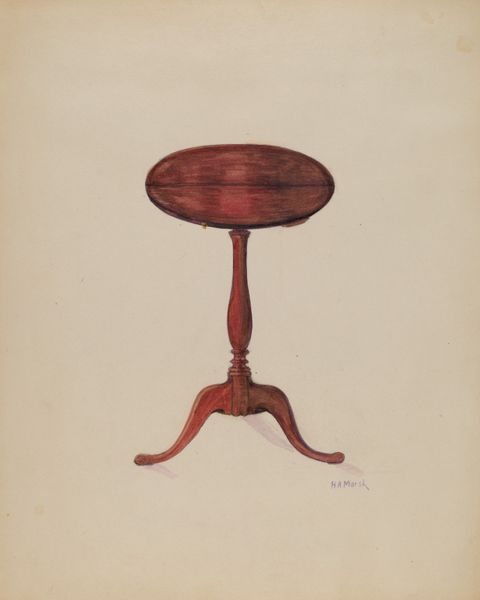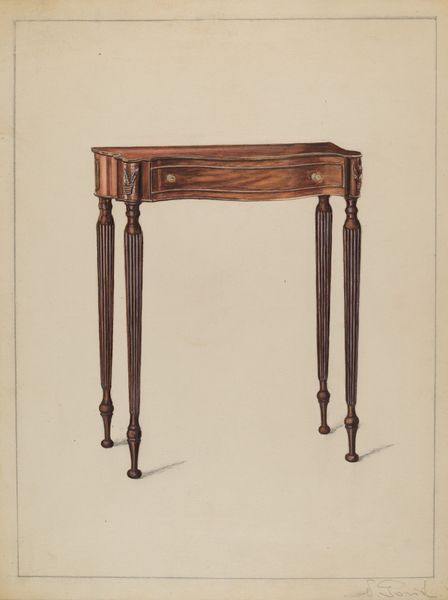
drawing, watercolor
#
drawing
#
water colours
#
watercolor
#
watercolour illustration
#
academic-art
#
watercolor
Dimensions: overall: 29.2 x 23 cm (11 1/2 x 9 1/16 in.) Original IAD Object: none given
Copyright: National Gallery of Art: CC0 1.0
Editor: So, here we have Nicholas Gorid’s "Checker Table," created in 1936 using watercolors. It's deceptively simple, but the longer I look, the more I notice the careful rendering of the wood grain. What's your take on this, especially considering the social context of the time? Curator: It’s a fascinating piece when viewed through a historical lens. At first glance, it appears to be merely a representational drawing of a domestic object. But consider the 1930s – a period of economic hardship and social upheaval. What purpose might this serve in that context, beyond simple documentation? Editor: Perhaps an idealization of domestic life? A return to simpler times through art? Curator: Precisely! Academic art often serves as a means to reinforce societal norms or to present an idealized version of reality, especially during times of crisis. This could be seen as a nostalgic yearning for stability, wouldn’t you say? Or perhaps an endorsement of middle-class leisure in the face of widespread poverty. How do you think its exhibition might influence its meaning? Editor: If it were displayed in a grand museum versus, say, a furniture store, it’d shift from being a depiction of an object to more of a commentary on societal values and design aesthetics of the era. That placement elevates the drawing into a social statement. Curator: Exactly. The act of exhibiting it shapes how we understand not only the artist’s intention, but also the values that are presented. It highlights how museums function as cultural institutions, subtly reinforcing social norms through seemingly innocent artwork. Editor: I hadn’t fully appreciated the connection between art and social messaging. Now, I see this “Checker Table” as more than just a nice piece. It represents a particular worldview, carefully curated for public consumption. Curator: Indeed. That's the power of viewing art within its historical and institutional context. It adds so much meaning to otherwise ordinary objects.
Comments
No comments
Be the first to comment and join the conversation on the ultimate creative platform.

